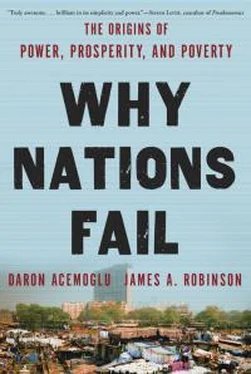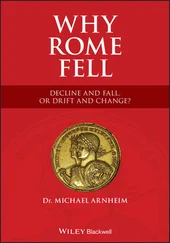Right up until the early 1980s, many Westerners were still seeing the future in the Soviet Union, and they kept on believing that it was working. In a sense it was, or at least it did for a time. Lenin had died in 1924, and by 1927 Joseph Stalin had consolidated his grip on the country. He purged his opponents and launched a drive to rapidly industrialize the country. He did it via energizing the State Planning Committee, Gosplan, which had been founded in 1921. Gosplan wrote the first Five-Year Plan, which ran between 1928 and 1933. Economic growth Stalin style was simple: develop industry by government command and obtain the necessary resources for this by taxing agriculture at very high rates. The communist state did not have an effective tax system, so instead Stalin “collectivized” agriculture. This process entailed the abolition of private property rights to land and the herding of all people in the countryside into giant collective farms run by the Communist Party. This made it much easier for Stalin to grab agricultural output and use it to feed all the people who were building and manning the new factories. The consequences of this for the rural folk were calamitous. The collective farms completely lacked incentives for people to work hard, so production fell sharply. So much of what was produced was extracted that there was not enough to eat. People began to starve to death. In the end, probably six million people died of famine, while hundreds of thousands of others were murdered or banished to Siberia during the forcible collectivization.
Neither the newly created industry nor the collectivized farms were economically efficient in the sense that they made the best use of what resources the Soviet Union possessed. It sounds like a recipe for economic disaster and stagnation, if not outright collapse. But the Soviet Union grew rapidly. The reason for this is not difficult to understand. Allowing people to make their own decisions via markets is the best way for a society to efficiently use its resources. When the state or a narrow elite controls all these resources instead, neither the right incentives will be created nor will there be an efficient allocation of the skills and talents of people. But in some instances the productivity of labor and capital may be so much higher in one sector or activity, such as heavy industry in the Soviet Union, that even a top-down process under extractive institutions that allocates resources toward that sector can generate growth. As we saw in chapter 3, extractive institutions in Caribbean islands such as Barbados, Cuba, Haiti, and Jamaica could generate relatively high levels of incomes because they allocated resources to the production of sugar, a commodity coveted worldwide. The production of sugar based on gangs of slaves was certainly not “efficient,” and there was no technological change or creative destruction in these societies, but this did not prevent them from achieving some amount of growth under extractive institutions. The situation was similar in the Soviet Union, with industry playing the role of sugar in the Caribbean. Industrial growth in the Soviet Union was further facilitated because its technology was so backward relative to what was available in Europe and the United States, so large gains could be reaped by reallocating resources to the industrial sector, even if all this was done inefficiently and by force.
Before 1928 most Russians lived in the countryside. The technology used by peasants was primitive, and there were few incentives to be productive. Indeed, the last vestiges of Russian feudalism were eradicated only shortly before the First World War. There was thus huge unrealized economic potential from reallocating this labor from agriculture to industry. Stalinist industrialization was one brutal way of unlocking this potential. By fiat, Stalin moved these very poorly used resources into industry, where they could be employed more productively, even if industry itself was very inefficiently organized relative to what could have been achieved. In fact, between 1928 and 1960 national income grew at 6 percent a year, probably the most rapid spurt of economic growth in history up until then. This quick economic growth was not created by technological change, but by reallocating labor and by capital accumulation through the creation of new tools and factories.
Growth was so rapid that it took in generations of Westerners, not just Lincoln Steffens. It took in the Central Intelligence Agency of the United States. It even took in the Soviet Union’s own leaders, such as Nikita Khrushchev, who famously boasted in a speech to Western diplomats in 1956 that “we will bury you [the West].” As late as 1977, a leading academic textbook by an English economist argued that Soviet-style economies were superior to capitalist ones in terms of economic growth, providing full employment and price stability and even in producing people with altruistic motivation. Poor old Western capitalism did better only at providing political freedom. Indeed, the most widely used university textbook in economics, written by Nobel Prize–winner Paul Samuelson, repeatedly predicted the coming economic dominance of the Soviet Union. In the 1961 edition, Samuelson predicted that Soviet national income would overtake that of the United States possibly by 1984, but probably by 1997. In the 1980 edition there was little change in the analysis, though the two dates were delayed to 2002 and 2012.
Though the policies of Stalin and subsequent Soviet leaders could produce rapid economic growth, they could not do so in a sustained way. By the 1970s, economic growth had all but stopped. The most important lesson is that extractive institutions cannot generate sustained technological change for two reasons: the lack of economic incentives and resistance by the elites. In addition, once all the very inefficiently used resources had been reallocated to industry, there were few economic gains to be had by fiat. Then the Soviet system hit a roadblock, with lack of innovation and poor economic incentives preventing any further progress. The only area in which the Soviets did manage to sustain some innovation was through enormous efforts in military and aerospace technology. As a result they managed to put the first dog, Leika, and the first man, Yuri Gagarin, in space. They also left the world the AK-47 as one of their legacies.
Gosplan was the supposedly all-powerful planning agency in charge of the central planning of the Soviet economy. One of the benefits of the sequence of five-year plans written and administered by Gosplan was supposed to have been the long time horizon necessary for rational investment and innovation. In reality, what got implemented in Soviet industry had little to do with the five-year plans, which were frequently revised and rewritten or simply ignored. The development of industry took place on the basis of commands by Stalin and the Politburo, who changed their minds frequently and often completely revised their previous decisions. All plans were labeled “draft” or “preliminary.” Only one copy of a plan labeled “final”—that for light industry in 1939—has ever come to light. Stalin himself said in 1937 that “only bureaucrats can think that planning work ends with the creation of the plan. The creation of the plan is just the beginning. The real direction of the plan develops only after the putting together of the plan.” Stalin wanted to maximize his discretion to reward people or groups who were politically loyal, and punish those who were not. As for Gosplan, its main role was to provide Stalin with information so he could better monitor his friends and enemies. It actually tried to avoid making decisions. If you made a decision that turned out badly, you might get shot. Better to avoid all responsibility.
An example of what could happen if you took your job too seriously, rather than successfully second-guessing what the Communist Party wanted, is provided by the Soviet census of 1937. As the returns came in, it became clear that they would show a population of about 162 million, far less than the 180 million Stalin had anticipated and indeed below the figure of 168 million that Stalin himself announced in 1934. The 1937 census was the first conducted since 1926, and therefore the first one that followed the mass famines and purges of the early 1930s. The accurate population numbers reflected this. Stalin’s response was to have those who organized the census arrested and sent to Siberia or shot. He ordered another census, which took place in 1939. This time the organizers got it right; they found that the population was actually 171 million.
Читать дальше












